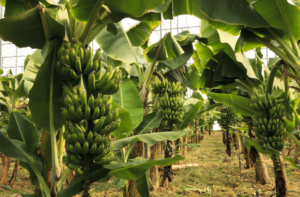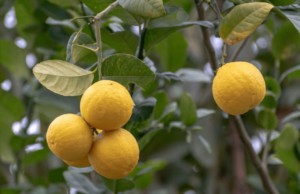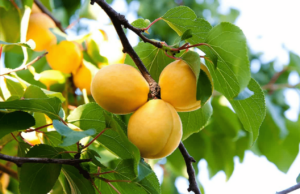Spring Gardening Tips: Prepare Your Garden for a Bountiful Season
When it comes to growing a successful garden, soil preparation is key. Before planting anything, it’s important to ensure that your soil is healthy and nutrient-rich. One way to do this is by testing the pH levels of your soil. You can do this by purchasing a soil testing kit from your local garden center or by sending a sample of your soil to a professional lab. Once you know the pH levels of your soil, you can then make any necessary adjustments by adding lime to raise the pH or sulfur to lower it.
In addition to testing the pH levels, it’s also important to add organic matter to your soil. This can be done by incorporating compost, manure, or other organic materials into the soil. Organic matter helps to improve the soil structure, retain moisture, and provide essential nutrients for plant growth. It’s also important to till the soil to break up any compacted areas and improve drainage. By taking the time to properly prepare your soil, you’ll be setting your garden up for success from the very beginning.
Another important aspect of soil preparation is ensuring that it is well-draining. This can be achieved by adding sand or perlite to the soil to improve its texture and drainage capabilities. Well-draining soil is essential for preventing waterlogged roots and promoting healthy plant growth. Additionally, it’s important to remove any weeds or debris from the soil before planting to prevent competition for nutrients and water. By taking the time to properly prepare your soil, you’ll be providing your plants with the best possible environment for growth and success.
Key Takeaways
- Proper soil preparation is essential for healthy plant growth
- Planting schedule should take into account the specific needs of each plant
- Effective pest control methods are crucial for protecting your plants
- Mulching helps retain moisture and suppress weeds
- Watering techniques should be tailored to the specific needs of each plant
- Regular pruning and maintenance are necessary for healthy plant growth
- Enjoy the fruits of your labor by harvesting at the right time and savoring the results
Planting Schedule
When it comes to planting a successful garden, timing is everything. Different plants have different planting schedules based on their specific needs and the climate in which they are being grown. It’s important to do some research on the specific plants you want to grow to determine the best time to plant them in your area. Some plants thrive in cooler temperatures and should be planted in early spring, while others prefer warmer weather and should be planted in late spring or early summer.
In addition to considering the specific needs of each plant, it’s also important to take into account the local climate and weather patterns. Pay attention to the average last frost date in your area, as planting too early can result in damage to your plants from late frosts. It’s also important to consider the length of the growing season in your area when planning your planting schedule. Some plants require a longer growing season and should be planted as early as possible, while others can be planted later in the season and still have time to mature before the first frost.
It’s also important to consider succession planting when planning your garden. This involves planting crops at different times throughout the season to ensure a continuous harvest. By staggering your plantings, you can extend the harvest period and ensure a steady supply of fresh produce throughout the growing season. Taking the time to carefully plan your planting schedule will help you make the most of your garden space and maximize your harvest.
Pest Control
One of the biggest challenges that gardeners face is dealing with pests that can damage or destroy their plants. There are a variety of pests that can wreak havoc on a garden, including insects, rodents, and even larger animals like deer. It’s important to take proactive measures to control pests in order to protect your plants and ensure a successful harvest.
One effective method of pest control is using natural predators to keep pest populations in check. For example, ladybugs are voracious eaters of aphids, while praying mantises feed on a variety of garden pests. By attracting these beneficial insects to your garden, you can help control pest populations without the use of harmful chemicals. Additionally, planting companion plants that repel pests or attract beneficial insects can help protect your garden from damage.
Another important aspect of pest control is practicing good garden hygiene. This includes removing any diseased or damaged plants, as well as cleaning up any fallen leaves or debris that can harbor pests. It’s also important to rotate crops from year to year to prevent the buildup of pests in the soil. By taking these proactive measures, you can help prevent pest infestations and protect your plants from damage.
In some cases, it may be necessary to use chemical pesticides to control pest populations. However, it’s important to use these products sparingly and according to label instructions to minimize harm to beneficial insects and other wildlife. There are also many organic and natural pest control products available that can effectively control pests without harming the environment. By taking a proactive approach to pest control, you can protect your plants and ensure a successful harvest.
Mulching
“`html
| Types of Mulch | Benefits | Cost |
|---|---|---|
| Organic Mulch | Improves soil structure, retains moisture, and adds nutrients to the soil | Varies depending on the type of organic material |
| Inorganic Mulch | Long-lasting, doesn’t decompose, and helps control weeds | Usually more expensive upfront but can last longer |
| Rubber Mulch | Durable, doesn’t attract pests, and retains color for a long time | Higher initial cost but can be cost-effective in the long run |
“`
Mulching is an important practice in gardening that offers a wide range of benefits for plant health and soil quality. Mulch helps to retain moisture in the soil, suppress weed growth, regulate soil temperature, and improve overall soil structure. There are many different types of mulch available, including organic materials such as straw, wood chips, and leaves, as well as synthetic materials like plastic and rubber.
One of the primary benefits of mulching is its ability to retain moisture in the soil. By covering the soil with a layer of mulch, you can help reduce evaporation and maintain consistent moisture levels for your plants. This is especially important during hot and dry periods when water conservation is crucial for plant health. In addition to retaining moisture, mulch also helps regulate soil temperature by insulating the soil from extreme heat or cold.
Another important benefit of mulching is its ability to suppress weed growth. By covering the soil with a layer of mulch, you can prevent weed seeds from germinating and competing with your plants for nutrients and water. This can help reduce the amount of time and effort spent on weeding, allowing you to focus on other aspects of garden maintenance.
In addition to its practical benefits, mulch also adds aesthetic appeal to the garden by providing a uniform and tidy appearance. Mulch comes in a variety of colors and textures, allowing you to customize the look of your garden while also providing valuable benefits for plant health and soil quality.
Watering Techniques
Proper watering is essential for maintaining healthy plants and ensuring a successful harvest. Different plants have different water requirements based on their specific needs and the climate in which they are being grown. It’s important to pay attention to the moisture levels in your soil and adjust your watering schedule accordingly.
One effective watering technique is drip irrigation, which delivers water directly to the base of plants through a system of hoses or tubes with emitters. This method helps conserve water by minimizing evaporation and runoff while also providing consistent moisture for plant roots. Drip irrigation is especially useful for large gardens or areas with water restrictions, as it allows you to water more efficiently and effectively.
Another important aspect of watering is timing. It’s best to water early in the morning or late in the evening when temperatures are cooler and evaporation rates are lower. This helps ensure that water is absorbed by the soil and taken up by plant roots before it has a chance to evaporate. It’s also important to water deeply and infrequently rather than shallowly and frequently, as this encourages deep root growth and helps plants become more resilient to drought.
In addition to using efficient watering techniques, it’s also important to pay attention to the specific water needs of different plants in your garden. Some plants require more frequent watering than others, especially during hot and dry periods. By taking the time to understand the specific water requirements of each plant in your garden, you can help ensure that they receive the moisture they need for healthy growth and development.
Pruning and Maintenance

Pruning is an essential practice for maintaining healthy plants and promoting strong growth and abundant harvests. Different plants have different pruning needs based on their specific growth habits and fruiting patterns. It’s important to understand the pruning requirements of each plant in your garden in order to promote optimal growth and productivity.
One important aspect of pruning is removing dead or diseased branches from plants. This helps improve air circulation and sunlight penetration within the plant canopy, reducing the risk of disease and promoting overall plant health. It’s also important to remove any suckers or water sprouts that may be diverting energy away from fruit production.
In addition to removing unwanted growth, pruning also helps shape plants and promote strong structural development. By selectively removing branches and shoots, you can encourage plants to grow in a more open and balanced form that allows for better light penetration and air circulation. This can help reduce the risk of disease and improve overall plant health.
It’s also important to prune fruit-bearing plants at specific times throughout the year in order to promote optimal fruit production. For example, many fruit trees benefit from winter pruning when they are dormant, while berry bushes may require summer pruning after they have finished fruiting. By understanding the specific pruning needs of each plant in your garden, you can help promote strong growth and abundant harvests.
Harvesting and Enjoying the Fruits of Your Labor
After months of hard work tending to your garden, it’s finally time to reap the rewards of your efforts by harvesting fresh produce for you and your family to enjoy. Harvesting at the right time is crucial for ensuring that fruits and vegetables are at their peak flavor and nutritional value.
When it comes to harvesting fruits and vegetables, it’s important to pay attention to their specific ripening cues. For example, tomatoes should be harvested when they are fully colored but still firm, while cucumbers are best picked when they are small and tender. It’s also important to harvest regularly in order to encourage continued production from your plants.
Once you’ve harvested your fruits and vegetables, it’s time to enjoy them! There’s nothing quite like the taste of fresh produce straight from the garden. Whether you’re enjoying a crisp salad made with homegrown lettuce and tomatoes or savoring a juicy peach picked from your own tree, there’s something truly special about eating food that you’ve grown yourself.
In addition to enjoying fresh produce straight from the garden, there are many ways to preserve your harvest for later enjoyment. Canning, freezing, drying, and pickling are all popular methods for preserving fruits and vegetables so that you can enjoy them throughout the year. By taking the time to preserve your harvest, you can savor the flavors of summer even during the coldest winter months.
In conclusion, gardening is a rewarding endeavor that offers countless benefits for both body and soul. By taking the time to properly prepare your soil, plan your planting schedule, control pests, mulch, water efficiently, prune effectively, and harvest with care, you can enjoy a bountiful harvest of fresh produce that will nourish both body and soul for months to come. So roll up your sleeves, dig in the dirt, and get ready to enjoy the fruits of your labor!
FAQs
What are some essential gardening tips for spring?
Some essential gardening tips for spring include cleaning up the garden, preparing the soil, starting seeds indoors, and planting cool-season vegetables and flowers.
How can I prepare my garden for spring?
To prepare your garden for spring, you can start by cleaning up any debris, pruning dead branches, and removing weeds. It’s also important to prepare the soil by adding compost or fertilizer and loosening the soil to improve drainage.
What are some popular vegetables to plant in the spring?
Popular vegetables to plant in the spring include lettuce, spinach, carrots, radishes, peas, and broccoli. These cool-season vegetables thrive in the cooler temperatures of spring.
What are some popular flowers to plant in the spring?
Popular flowers to plant in the spring include tulips, daffodils, hyacinths, pansies, and snapdragons. These flowers add color and beauty to the garden during the spring season.
How can I protect my garden from spring frost?
To protect your garden from spring frost, you can cover tender plants with frost cloth or old bedsheets, and water the soil before the expected frost to help insulate the plants. Additionally, planting frost-resistant varieties can help mitigate the impact of spring frost.


